| item(s), Total: $0.00 View Cart |
| Shopping cart is empty. |
Hi There and welcome to our Winter e-newsletter!
In this newsletter we have some information for you on wicking beds - a new concept for saving water in the garden. Also caring for citrus, protecting your plants from frost, and planting bare rooted trees. And we are pleased to have an in depth look at Beetroot, and Cat's Claw, a lesser known herb, courtesy of Leesa Caldwell of The Greenhouse, our supplier of Certified Organic vegetable seedlings. We also have an exciting SPECIAL OFFER for our newsletter readers. For the first time, we are teaming up with another business (Guildford Town Garden Centre) to offer our readers something special. At the end of this newsletter we have some interesting links you may like to check out. Some have information about great workshops happening around town soon, and some are educational & fun! So make yourself a cuppa, put your feet up, and read on! Don’t forget, if you have anything you would like us to focus on in future editions, drop us a line. Cheers, In this newsletter: Jobs for the garden this Winter SPECIAL OFFER for our newsletter readers!! Workshops, links & other good stuff!
Providing you have an area in your garden which receives full sun over winter, there are many types of vegies which will prove highly productive over the next few months, if planted out now. Other jobs to do on those lovely sunny winter days include:-
Beetroot was offered to Apollo in his temple at Delphi, where it was reckoned to be worth its own weight in silver. In early times, the medicinal properties of the root were more important than its eating qualities as it was used to treat a range of ailments including fevers, constipation, wounds and various skin problems. In the early times the roots were long and thin like carrots. It wasn’t until the sixteenth century that beetroot was developed into the rounded root shape that we have today. Beetroot was also used as a sweet ingredient in cakes and puddings. The plants were used as decorative bedding because of their attractive green leaves. Beetroot juice or broth was recommended as an easily digested food for the aged and weak. Health benefits
Folic acid is essential for normal tissue growth. It is crucial to the development of a baby’s spinal cord during the first three months of pregnancy and can help prevent spinal cord defects such as spinal bifida. Studies also suggest that beetroot’s folic acid may also play a part in helping to protect against Alzheimer’s and dementia. Beets also contain carbohydrates, protein, powerful antioxidants and soluble fibre. Beta cyanin, the pigment that gives beetroot its colour is one of those powerful antioxidants. Antioxidants are believed to help reduce the oxidation of LDL cholesterol, in turn protecting artery walls and reducing the risk of heart disease and stroke. Beetroot also contains carotenoids and flavonoids which also help prevent LDL cholesterol. The high volume of soluble fibre found in beetroot also feeds the good bacteria in our gut, which also lowers LDL cholesterol levels. Beetroot contains the compounds, betaine and methionine, that support liver detoxification. Without this function, toxins can accumulate both in the liver and the body’s fatty tissues, preventing weight loss and contributing to sluggishness, mood swings and more serious illnesses. A recent study by Wake Forest University in North Carolina, USA has shown that the high content of nitrates in beetroot may also help fight the progression of dementia, as nitric oxide in the blood also helps increase blood flow to the brain. The root of beetroot contains anti-tumor, emollient, nutritive, rejuvenative, stimulating, resistance-enhancing properties. It increases the uptake of oxygen by as much as 400%. It supports and stimulates the liver, gallbladder, kidney and spleen and increases the flow of bile. Beet juice combined with the juices of carrot and cucumber is one of the finest cleansing materials for the kidneys and gall bladder. It is highly beneficial in all disorders relating to these two organs (*Eve Juurik – http://www.thespringoflife.net/) Scientists discovered that beet juice can effectively inhibit cell mutations caused by nitrosamines, a cancer-causing compound produced in the stomach that is commonly used in processed meats as a preservative. The positive effects of ingesting beets were exhibited by patients with stomach cancer. Fun Facts about Beetroot
Cooking beetroot Beetroot can be boiled, baked, roasted , pickled or served raw in salads. Be careful when you peel beetroot as most of the nutrients are found just under the skin, so peel it thinly. Another way to peel beetroots is to boil them with their skins on. The skin comes off fairly easily when cooked. Alternatively, scrub the skins well before cooking and eat them too! The taste of the beetroots leaves matches the taste of spinach when boiled. They are often used in soups like borsch, a popular soup in Eastern Europe. Leaves can be eaten raw in salads. Growing Beetroot Beetroots come in all shapes and sizes today but the most common is the round deep red coloured beets. They also come in different colours – yellow, white and candy striped. If you have not grown beetroot before, start with a variety that is easy to grow such as Detroit. You can progress to some of the more exotic varieties later such as Chioggia and Cylindria. All soil should be thoroughly prepared but do not use areas that have recently had manure added, particular if the manure was raw. Beetroot seeds can be sown all year, either directly into prepared soil or by purchasing seedlings. Cultivations should be as part of a normal 3 or 4 year crop rotation wherever possible, beetroot should be included in the root part of the cycle. The roots should swell to a useable size in about 3 months. Leaving the plants longer will produce larger roots but leaving them too long may result in bolting (going to seed) or woodiness in the centre of the root. Mulching with fine compost can also help prolong growth. When harvesting the crop take care to loosen the soil around the base of the plant so as not to damage the long tail or tap root. Pick only when you can use within a week or so unless you intend to store the crop in bulk. Long term storage of mature roots is possible provided that they are not exposed to excessive heat or cold and are not allowed to dry out or become excessively wet. A range of Certified Organic Beetroot seedlings are available year round, grown by The Greenhouse, and available at the Green Life Soil Co. This article courtesy of Leesa Caldwell from The Greenhouse.
History Cat’s Claw is known by the Ashaninka and other indigenous people of Peru for its ability to regulate chronic illnesses. It has been used since the earliest of times for all types of serious illness, from asthma and diabetes to arthritis and cancer. Cat's Claw is a tropical vine that grows in rainforest and jungle areas in South America and Asia. Some cultures refer to the plant as the "Sacred Herb of the Rain Forest". This vine gets its name from the small thorns at the base of the leaves, which looks like a cat's claw. These enable the vine to attach itself around trees climbing to heights up to 30m or more. The root bark was initially used commonly as medicine, though by the early 1990’s the wild species became threatened and since then only the stem bark from ecologically sustainable sources should be used. The bark is strongly anti-inflammatory and may inhibit gene expression. The plant is considered a valuable medicinal resource and is protected in Peru. Although scientific research has just recently begun to explore its benefits, many cultures native to the South American rain forest areas have used this herb for hundreds of years. The active substances of Cat's Claw are alkaloids, tannins and several other phytochemicals. Some of the alkaloids have been proven to boost the immune system. The major alkaloid rhynchophylline has anti-hypertensive effects and may reduce the risk of stroke and heart attack by lowering blood pressure, increasing circulation, reducing heart rate and controlling cholesterol. Constituents of Cat's Claw are anti-inflammatory, antioxidant, Immuno-stimulant, antineoplastic and anticancer properties. Many treatments combine the herb with different plants and natural products to increase the absorption and bioavailability. Cat's Claw, like Echinacea is very effective at supporting immune function. It acts to stimulate the production of white blood cells, inhibit tumour growth as well as having a non-specific immune resistance. It helps to reinvigorate the body’s efforts to counter infection and inflammation. Cat’s Claw powerful antioxidant action helps prevent cellular damage and aid in any chronic degenerative disorder. Rheumatoid Arthritis, Asthma and Ulcerative Colitis will benefit from Cat’s Claw. It has been successfully used to remove bone spurs over a three month period. European clinical studies have used the extract from the bark in combination with AZT in the treatment of AIDS. It is also used in the treatment and prevention of diabetes, PMS, chronic fatigue syndrome, lupus, and prostate conditions. It is a great preventative for cancer particularly breast cancer. It will also help to counter balance the effects of Chemotherapy. Of the 2 types of Cat’s Claw only the one using POA's should be used as a medicine, since the TOA's may suppress immune function. Preparations of cat's claw can also be applied to the skin. Cat's Claw is also known to have a contraceptive activity. Cat's claw tea has been used as an eye rinse to clear up eye infections and powdered herb has been used between toes to clear up athlete’s foot. Dosage Tea: Take 1 g of cat's claw root to 8 ounces water & boil 10 - 15 minutes, cool, and strain. Take three times in a day. Tincture : A solution made from herb, alcohol, and water. Take three times in a day. Solid extract: 10 to 20 mg . Take three times in a day.
Cat's Claw can be purchased through The Greenhouse’s online shop. http://www.thegreenhouseorganic.com/ Tell all your health care providers about any complementary and alternative practices you use. Give them a full picture of what you do to manage your health. This will help ensure coordinated and safe care. This article courtesy of Leesa Caldwell from The Greenhouse.
One thing gardeners don't have to worry about so much in winter is watering! However, with summer inevitably around the corner, and a less than brilliant winter rainfall received so far, there is no dobut that we need to be always looking at more efficient ways to use water in the garden. Queenslander Colin Austin is credited with coming up with the concept of a wicking bed. Possibly the next big thing in our hot, dry summers as a water saving tool, it is worth having a look at the concept and assessing whether they are an option for you. A wicking bed has been described as "a self watering pot on steroids". It is a way of growing plants where water wicks up from an ungerground water reservoir by capillary action. Water use can be reduced by up to 50% from conventional growing systems, as evaporation is significantly reduced.
The first part of a wicking bed you need to have is the waterproof membrane layer. This can be black plastic (make sure it is UV treated if it will be exposed to any sunlight), or a layer of pond liner material. While more expensive, this is usually much longer lasting. Underneath the plastic you may wish to use a layer of cardboard or newspaper to prevent any stones damaging the plastic. (Obviously, in a bathtub or any container which holds water, a waterproof layer is not required!) The second part is the reservoir layer. This reservoir layer can be made from either fine bluemetal or gravel, coarse woody mulch (eg. tree prunings) or coarse river sand. There are advantages and disadvantages of all options - consider which you think would work best for you. If using stones or gravel, use small ones. Bigger stones have a larger surface area and the wicking action is reduced. You may like to use a layer of geotextile fabric (available from plumbing supply stores) or shadecloth between the stones and soil, to stop soil from falling down through the stones and thus clogging the gaps. If using riversand, this is probably also recommended, to stop organic fines working their way down. Be aware that the geotextile or shadecloth can also be a barrier, and may affect the wicking action. The inventor of the wicking bed system prefers using a coarse woody material, due to its absorbancy and the wicking being very effective. He also believes the nutrients released benefit plants and soil biology, resulting in improved growth. However the downside of this is that the organic matter will break down over time, and wll need to be topped up. The recommended reservoir depth is 200mm. Due to the wicking action having its limit at about 300mm, going much deeper than 200mm is actually detrimental, and would result in a stagnant pool of water remaining which cannot reach the root zone. The last layer in a wicking bed is the growing medium. The depth of growing soil above the reservoir should be between 200 - 300mm, which is deep enough for most vegetable crops. A good, friable organic vegetable mix makes an ideal growing medium. Good drainage of the topsoil layer is critical. It is essential that between the reservoir and topsoil layers, you add an overflow drain. This prevents overwatering, allowing surplus water to seep out rather than waterlogging the topsoil, which would quickly kill your plants. Watering the wicking bed can be by any conventional means - water will collect on top of the plastinc sheeting and be wicked back upwards to the roots. However, the most efficient way to irrigate a wicking bed is to incorporate a distribution pipe in it's design. This pipe, layed at the very base of the reservoir, should have an elbow join with a pipe coming up to the surface. This is used to water the beds, and you can also inspect the pipe to ascertain if more water needs to be added to the system. If you have an automated system, a moisture sensor can be incorporated. You can use a bung or lid on the pipe to prevent mosquitos or dirt getting into it. It is a good idea to allow the reservoir to drain completely between irrigations so all the water is taken up, and not allowed to stagnate. Of course how often you need to water will depend on the climatic conditions at the time, and what you are growing. With a bit of observation, I'm sure a pattern would emerge to take the guesswork out of it. A wicking bed system enables soil moisture to be maintained at a reasonably constant level, rather than being innundated with water during irrigation, then drying out. This stable moisture content actually benefits plants and many beneficial soil microbes, enabling increased soil biology and activity, resulting in better nutrient availability and thus healthier growth. Just remember that if planting seeds into a wicking bed, the surface soil will be dry, and seeds will need to be watered conventionally until they have germinated and developed a root system deep enough to access the moisture below. Greywater is not recommended for a wicking bed system, due to buildup of salts, fats, etc. in the greywater that will remain in the closed system. The Green Life Soil Co, in conjunction with Water Installations, has a wicking bed kit (including our Certified Organic Vegie mix and aggregate) now available. Please contact us for further information. For further reading, and to see many more examples of wicking bed designs (including a video), here are some useful links: http://www.youtube.com/watch?v=WLsz5XWSE8o&feature=email Frost forms when water vapour freezes into ice crystals on cold surfaces. In winter, temperatures are usually low as the sun is low in the sky during the day and the nights are long. On clear nights, when there is no blanket of clouds to keep the warmth in, then any heat received during the day quickly escapes. The temperature will therefore drop considerably and as the moisture in the air freezes, the ground will be covered with frost. Plants are actually frost damaged when the water in their cells freezes, and as ice expands, it causes the cell structure to burst. By spraying water over a plant that has been hit by frost, you can raise the temperature around the plants leaves, and the plant will thaw gradually, minimising damage. But you will need to be up early - it's too late once the sun hits. How to minimise the risk of frost damage
If you're too late, and you already have frost damaged plants, here is what you do:
Winter is the perfect time to research and select a bare rooted tree, and to get it in the ground ready for spring. If you are looking at fruit trees, it is worth doing some research and getting advice on varieties and what is particularly suited to you grow in your area. Keep in mind some types of trees require more than one tree for pollination and fruit set, and think about whether the tree requires a 'chill factor' to do well. Also think about where the tree is to be positioned, and the eventual size it may reach. Consider dwarf varieties or espalliering if you have limited space.
It is definitely worth taking your time and getting it right - a tree will be a long term investment, and if you select well you will be rewarded for many years into the future. A poorly planned choice will leave you out of pocket and unhappy! So assuming you have found the perfect tree for your requirements, what do you do with it? Here is a step-by-step guide to planting to ensure the best results. Step 1. While you are preparing the planting hole, soak the tree roots in a bucket of water with about ½ cup of seaweed concentrate or fish emulsion. Step 2. Dig a hole approx. 1m across (so roots can spread as widely as possible). The hole should be around 50 – 60cm deep. Try to keep sides reasonably vertical. Place the removed topsoil in a heap next to the hole and mix aged manure and compost (or our concentrate mix) through this topsoil. Step 3. Drive a wooden stake into the base of the hole, slightly off centre. If the tree is large, use two stakes (one on either side of the hole). Partly backfill the hole with topsoil and compost mixture, making a small mound in the centre of the hole. Step 4. Examine the roots of the tree and cleanly prune off any damaged ends. Extra long roots should be shortened to fit into the hole. Avoid bending long roots around in a curve as this can lead to stunted growth. Step 5. Place the tree onto the mound of soil you have prepared in the hole. Roots should be just below soil level. Spread the roots as widely as possible. Step 6. Backfill with remainder of your topsoil and compost mix, (shaking the tree so soil filters through gaps between roots) until the hole is full. Secure the stem loosely to the stake. If two stakes are used, stretch a tree tie, twine or length of pantyhose between the two in a figure 8 for a loose but firm fit. Step 7. Water deeply and add more topsoil if needed. To avoid strangulation, tie the label to the stake rather than the plant. Step 8. Although it looks servere, you will get a healthier tree by pruning the branches. Remove any weak or broken branches and shorten the rest by half. Caring for Citrus Trees in Winter Originating from the tropics of South East Asia, citrus were introduced into the Middle East by at least 500BC and spread further into Europe with the expansion of the Roman Empire. Records show that oranges, lemons and limes arrived in Australia with the first fleet in 1788. Citrus plants are always a popular choice in home gardens. Most home gardens have room for one or two citrus trees. Dwarf cultivars are available that can even be grown in large pots. (Ideally, nothing smaller than 100L and up to 200L is advisable.) With gorgeous, deep green glossy foliage and fragrant white blossom, they are lovely plants to have in pots near your sitting area (and handy to pick to add to your G&T!), Originating from warmer climates, various citrus are remarkably adapted to a range of climatic conditions. Citrus trees can tolerate high temperatures well into the 40’s, and some can survive down to a few degrees below zero. It is important to provide frost protection for young trees, and to consider the microclimate in your back yard to optimise the growth and fruit yield. Generally a warm position in full sun is ideal. The optimal temperature for growing citrus is between 25 and 30oc, with growth stopping completely at 38oc and 13oc. Citrus have few other pest and disease issues. Scale, aphids, leafminer. Mealy bugs and crusader beetles can be other problems, but all these are easily treated with white oil, neem oil or soap sprays – all organic options. Healthy trees grown in full sun seem much less susceptible. Fruit fly can be another problem for many growers – it does require management but if you persevere you can gain the upper hand. (This is a topic I can talk about in another newsletter!) Citrus trees are relatively hungry feeders, and benefit from applications of manure and compost, and a light application of rock dust twice a year. Usually they are fed in the main growing seasons of spring and autumn. If using manures and other organic fertilisers (which tend to be slow release) apply in late winter to enable the nutrients to break down and be available when needed. Citrus do best in sandy or loamy soils – they do require reasonable drainage. If you have heavy clay soils, either plant them in mounds or consider the above ground, container option. Soils should be neutral to slightly acidic. Alkaline soils can be problematic and result in stunted, yellowed growth. Citrus are relatively slow growing, and will take at least 3 – 4 years before bearing fruit. It is usually a good idea to remove fruit from very young trees so energy is concentrated on growth. When planting out a citrus tree, tease out roots and if they are pot bound, unwind and trim some of the roots to encourage them to spread out once in the ground. A deep watering twice a week over summer is all that’s needed, and a woody mulch to conserve water and keep competing weeds at bay is also recommended. Pruning is not really required, but can be done if you wish to keep trees to a manageable size or picking height. Citrus trees can be pruned back quite hard if you choose - they are quite hardy and this will often rejuvenate an old tree which has been neglected. (It may take a couple of years but they will bounce back well.) Again, do some research into varieties to ensure your choice will suit your requirements. Buckets are always handy containers to use around the garden, and they are also recycleable in your yellow topped bin when they do finally need to be disposed of. We have sourced buckets made right here in Perth, minimising transportation costs and fuel miles involved. A small step, but we are trying to reduce packaging waste and saw this as a worthwhile thing to trial. Particularly as we have lost access to affordable recycling of plastic bags here in Perth. We are in the process of building an area to house the mineral refill zone... It's taking us a while, but we are nearly there! Drop in and see us soon!
Commonly, quince is used for jam and jelly making (and jelly is superb with cheese & crackers!). I love both but confess I can't be bothered making it. There are also recipes out there for chutney, and the fruit is used with meat in middle eastern cooking. As a dessert, the fruit is often stewed or baked, and it has a lovely, rich flavour, unusually dense texture and is divine with a little cream or vanilla icecream. The quickest way to enjoy a quince is to top and tail the fruit, peel it, and place it in a saucer with a little bit of water. Microwave for between 5 - 9 minutes then enjoy. Whether you choose to eat around the core as you go or cut the flesh away first is of course your choice. Quince cooked simply like this make a lovely breakfast drizzled with honey and eaten with yoghurt or porridge.
Quince can be baked in a slow oven or slow cooker whole or cut, or stewed in a little water and/or wine, with spices like cinnamon, vanilla, cloves, orange zest, and a good amount of sugar or honey (depending on how sweet your tooth is!). Quince Crumble Ingredients
Method In a large, heavy pot place the quince and cover with water, wine and add spices and sugar. Bring to the boil then simmer very low for at least 1 hour.* Taste and add additional sugar if you feel it necessary. When cooked, use a slotted spoon and place the quince in the bottom of a casserole dish (removing the cloves). You need some of the liquid in the dish (about a cup), and any surplus liquid can be used as a dessert syrup another time if desired. Mix the rolled oats, brown sugar, seeds/nuts and oil in a bowl. If too dry, add an extra drizzle of oil. Spoon over the quince and smooth/press down lightly. Cook at 180o for 30 – 40 minutes, until the top is slightly browning, and the fruit is bubbling below. (If browning too fast, cover with foil.)
* Quince will turn to a rich pinky colour with cooking. Although the texture will be adequately cooked sooner (good if you're in a hurry) slow cooking for longer will give you a deeper colour in the fruit. This recipe is also delicious with a mixture of apple and quince.
Guildford Town Garden Centre is an acccredited SGA Environmentally Certified Garden Centre, and their friendly staff will be happy to provide great advice when it comes to choosing the right tree for your needs. They have a huge range of ornamental and fruit trees now available. Valid until 31st August 2011. Call in and see Joanne or any of her knowledgeable team at 96 James Street Guildford, open 9 - 5, 7 days a week. So until next time – have a great time this Winter in the garden! Have fun, and Let’s get dirty! (Don't forget - we'd love your feedback on this newsletter! Please contact us with your comments!) Thanks, For details about a number of Permaculture workshops coming up see: http://www.permaculturewest.org.au/events Or to watch a fantastic series of videos about permaculture (total 30 mins) see: http://cwmgochchronicles.blogspot.com/ Visit The Green Life Soil Co store or online shop for a range of garden supplies and organic garden products. |

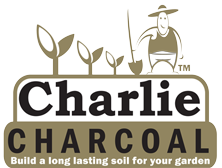

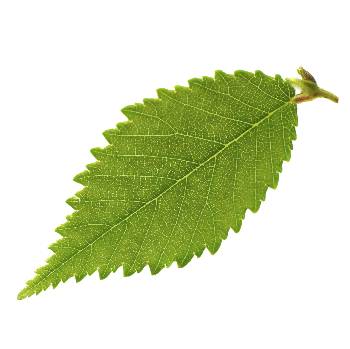 Winter is an incredibly productive time in the garden here in Perth. Some much needed rainfall, punctuated by sunny days has things growing brilliantly. That vibrant green colour is everywhere at this time of year and it seems so refreshing after a long, hot summer.
Winter is an incredibly productive time in the garden here in Perth. Some much needed rainfall, punctuated by sunny days has things growing brilliantly. That vibrant green colour is everywhere at this time of year and it seems so refreshing after a long, hot summer.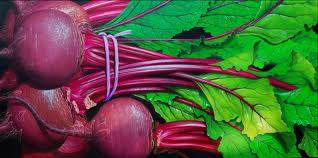 Beetroot has been cultivated for about 4,000 years. It was the ancient Babylonians who started to use it first. Beetroot, botanically known as Beta vulgaris, evolved from wild sea beet, which is a native of coastlines from India to Britain and is the ancestor of all cultivated forms of beet. Sea beet was first domesticated in the eastern Mediterranean and Middle East – although it was only the leaves that were eaten at that time.
Beetroot has been cultivated for about 4,000 years. It was the ancient Babylonians who started to use it first. Beetroot, botanically known as Beta vulgaris, evolved from wild sea beet, which is a native of coastlines from India to Britain and is the ancestor of all cultivated forms of beet. Sea beet was first domesticated in the eastern Mediterranean and Middle East – although it was only the leaves that were eaten at that time.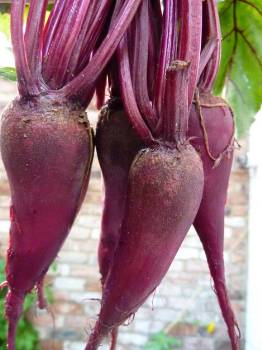 Beetroot contains potassium, magnesium and iron as well as vitamins A, B6 and C and folic acid.
Beetroot contains potassium, magnesium and iron as well as vitamins A, B6 and C and folic acid.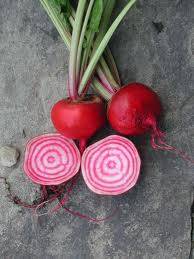 To prepare a great booster after an illness, juice one medium beetroot, one to two apples and two to three medium carrots. To increase its medicinal value, add a teaspoonful of lime juice to juice. It can be used as a liquid food in case of jaundice, hepatitis, nausea and vomiting due to biliousness, diarrhoea, dysentery and other diseases. Fresh beet juice mixed with a tablespoonful of honey and taken every morning before breakfast helps the healing of gastric ulcer (*Eve Juurik).
To prepare a great booster after an illness, juice one medium beetroot, one to two apples and two to three medium carrots. To increase its medicinal value, add a teaspoonful of lime juice to juice. It can be used as a liquid food in case of jaundice, hepatitis, nausea and vomiting due to biliousness, diarrhoea, dysentery and other diseases. Fresh beet juice mixed with a tablespoonful of honey and taken every morning before breakfast helps the healing of gastric ulcer (*Eve Juurik).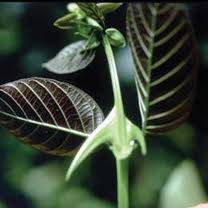 Cats Claw – Uncaria tormentosa
Cats Claw – Uncaria tormentosa The essential feature of a wicking bed is an underground reservoir of water in immediate contact with soil in the root zone. The water reservoir is typically filled with coarse organic material or aggregate. They can be 'closed systems' or 'open systems' and as simple as a polystrene box or as complex as a large growing area incorporating worm farms and composting bins. Closed systems can be raised above the ground, and can be made from timber railway sleepers, old bathtubs, cut down water tanks or commercial corrugated raised beds - really, you are only limted by your imagination and budget! Open systems are incorporated into the ground, and are useful to have alongside tree crops, where they can access the moisture with feeder roots, without stoping the ability for them to form deeper root systems into the ground.
The essential feature of a wicking bed is an underground reservoir of water in immediate contact with soil in the root zone. The water reservoir is typically filled with coarse organic material or aggregate. They can be 'closed systems' or 'open systems' and as simple as a polystrene box or as complex as a large growing area incorporating worm farms and composting bins. Closed systems can be raised above the ground, and can be made from timber railway sleepers, old bathtubs, cut down water tanks or commercial corrugated raised beds - really, you are only limted by your imagination and budget! Open systems are incorporated into the ground, and are useful to have alongside tree crops, where they can access the moisture with feeder roots, without stoping the ability for them to form deeper root systems into the ground.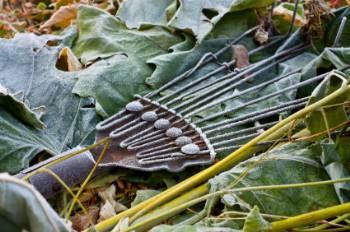 Frost Protection in the Garden
Frost Protection in the Garden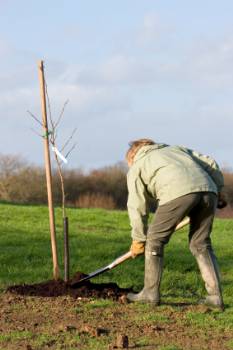 An excellent book we always recommend is "The Complete Book of Fruit Growing in Australia" by Louis Glowinski. It is available from your local library, but it would definitely be worth investing in your own copy and will be a reference book you will use many times. Your tree supplier should also be able to provide you with information and advice. I would always recommend a garden centre where you can speak with knowledgeable staff.
An excellent book we always recommend is "The Complete Book of Fruit Growing in Australia" by Louis Glowinski. It is available from your local library, but it would definitely be worth investing in your own copy and will be a reference book you will use many times. Your tree supplier should also be able to provide you with information and advice. I would always recommend a garden centre where you can speak with knowledgeable staff.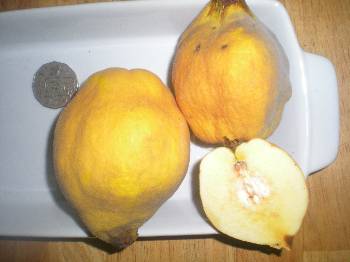 Quince (Cydonia oblonga) are a strange fruit, and are distantly related to apples and pears. Originating from the middle east and parts of Europe, they do grow quite well in Perth. A small, attractive tree (usually reaching 4 - 6 metres high with similar spread) they can be trimmed and pruned to shape, yet are happy also with a certain amount of neglect. Deciduous, they have large, soft green leaves which make a welcome patch of shade over summer, and they are quite attractive as the foliage yellows in autumn. In spring, they bear lovely white blossom, followed by large yellow fruit. The fruit can be anywhere between apple - grapefruit size (pictured here with 50 cents for size comparison), and will be larger if the tree has been watered regularly when fruit is forming. Unfortunately, the fruit is not edible raw (well, unless you have a very good dental plan) and takes a little effort in preparation due to its sheer hardness. I haven't been able to find any documented accounts, but I have a theory they would have been used in battle as projectiles at some stage in history! The fruit do appear in fruit & vegie shops around this time of year, and people with a quince tree will most likely be happy to give you some fruit to sample.
Quince (Cydonia oblonga) are a strange fruit, and are distantly related to apples and pears. Originating from the middle east and parts of Europe, they do grow quite well in Perth. A small, attractive tree (usually reaching 4 - 6 metres high with similar spread) they can be trimmed and pruned to shape, yet are happy also with a certain amount of neglect. Deciduous, they have large, soft green leaves which make a welcome patch of shade over summer, and they are quite attractive as the foliage yellows in autumn. In spring, they bear lovely white blossom, followed by large yellow fruit. The fruit can be anywhere between apple - grapefruit size (pictured here with 50 cents for size comparison), and will be larger if the tree has been watered regularly when fruit is forming. Unfortunately, the fruit is not edible raw (well, unless you have a very good dental plan) and takes a little effort in preparation due to its sheer hardness. I haven't been able to find any documented accounts, but I have a theory they would have been used in battle as projectiles at some stage in history! The fruit do appear in fruit & vegie shops around this time of year, and people with a quince tree will most likely be happy to give you some fruit to sample.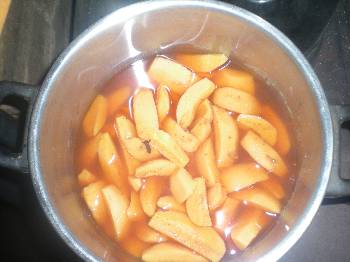 To prepare quince for cooking, I top and tail the fruit, peel then quarter it, then remove the core. You will need a good sharp knife or apple corer, and make sure you remove it all.
To prepare quince for cooking, I top and tail the fruit, peel then quarter it, then remove the core. You will need a good sharp knife or apple corer, and make sure you remove it all.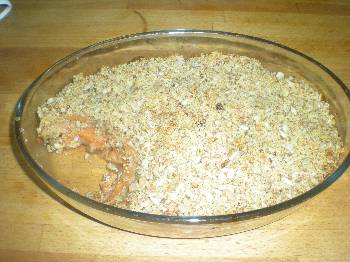 Serve with whipped cream or a good quality vanilla ice cream.
Serve with whipped cream or a good quality vanilla ice cream. We have a very special offer for you from Guildford Town Garden Centre. On presentation of this voucher*, they will offer our newsletter readers 10% off the price of any bare rooted tree or bagged tree in stock. (Ornamental or fruiting.)
We have a very special offer for you from Guildford Town Garden Centre. On presentation of this voucher*, they will offer our newsletter readers 10% off the price of any bare rooted tree or bagged tree in stock. (Ornamental or fruiting.)




















